
How to Use 3.7v LiPo: Examples, Pinouts, and Specs
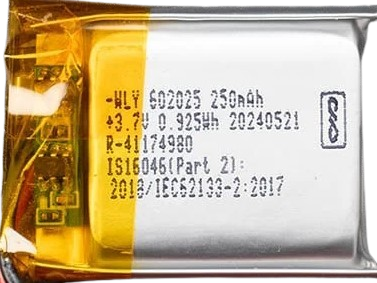
 Design with 3.7v LiPo in Cirkit Designer
Design with 3.7v LiPo in Cirkit DesignerIntroduction
The 3.7V Lithium Polymer (LiPo) battery is a rechargeable power source widely used in portable electronics, hobby electronics projects, and various other applications where a compact and lightweight power source is required. Its high energy density makes it an ideal choice for devices such as smartphones, remote-controlled toys, drones, and wearable technology.
Explore Projects Built with 3.7v LiPo
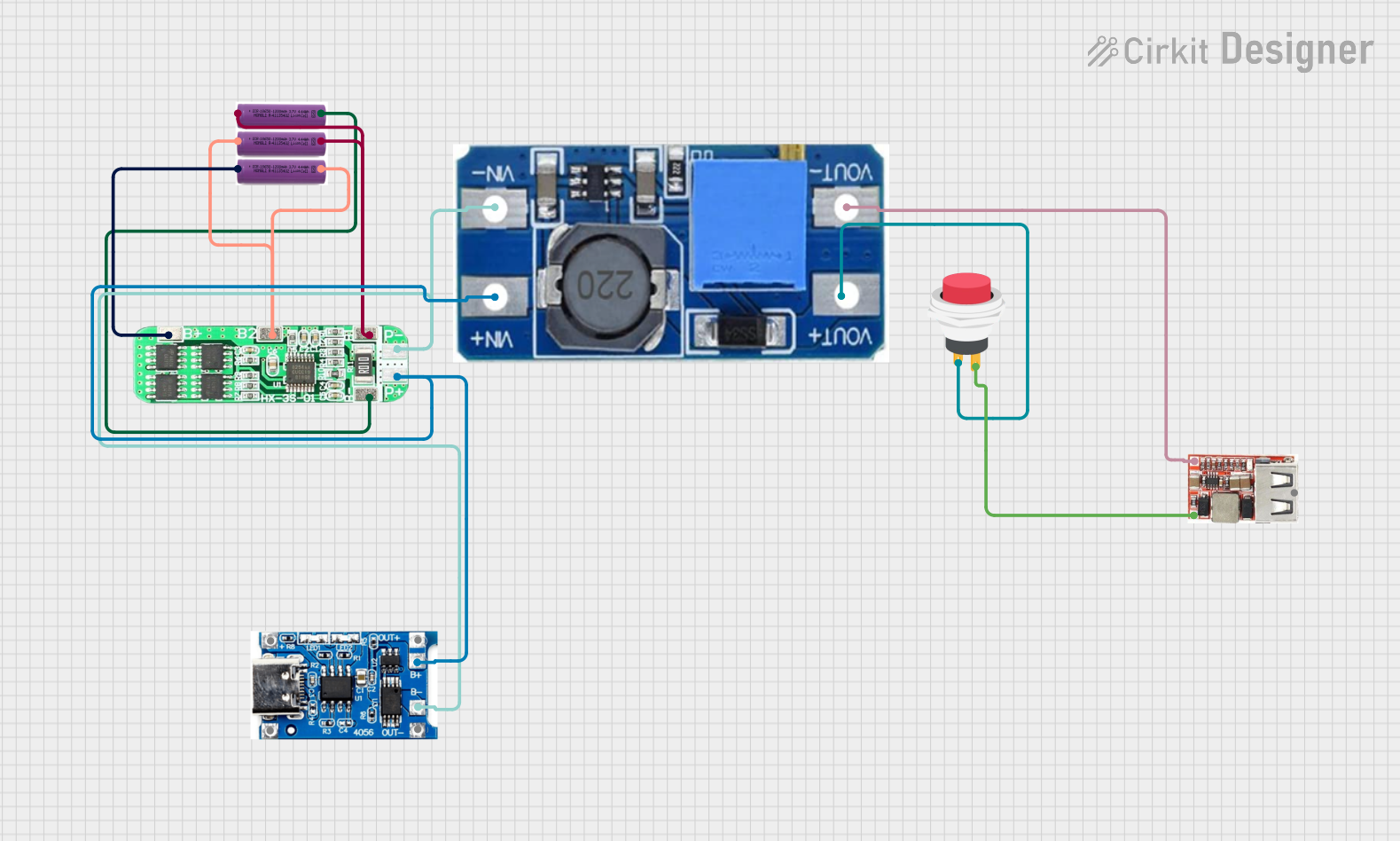
 Open Project in Cirkit Designer
Open Project in Cirkit Designer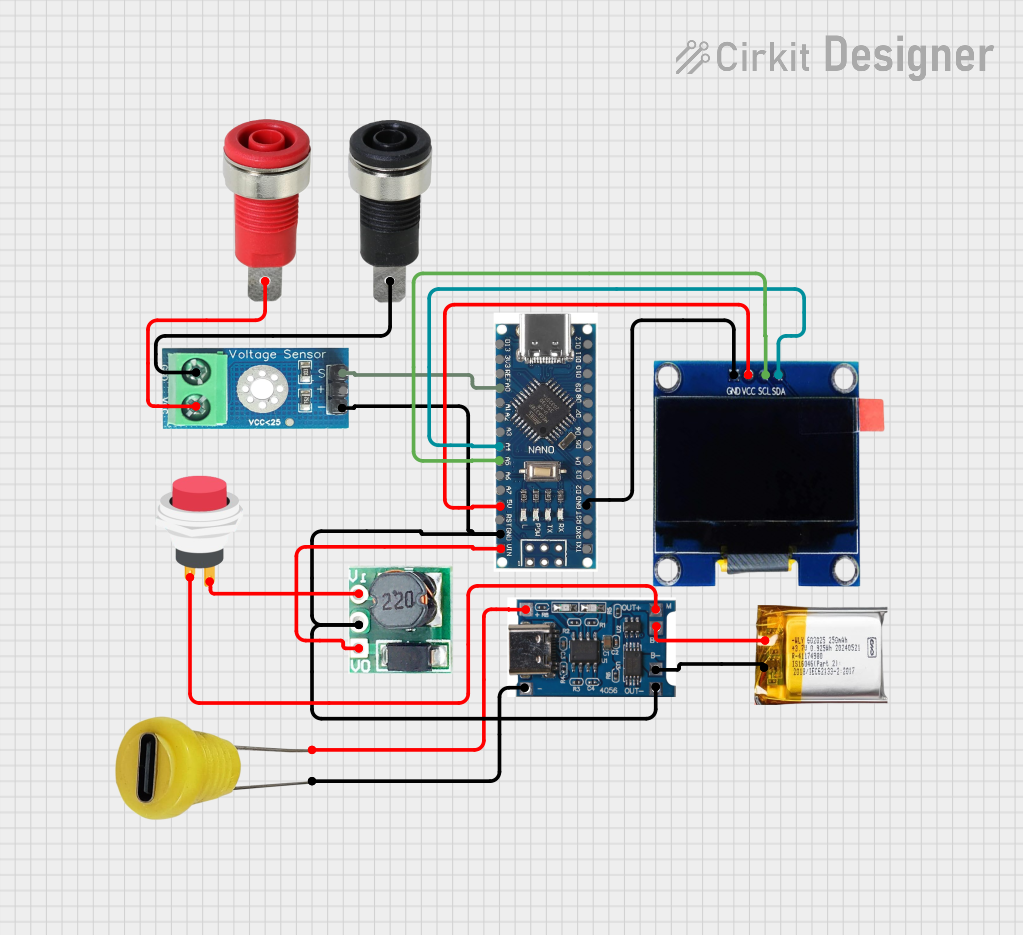
 Open Project in Cirkit Designer
Open Project in Cirkit Designer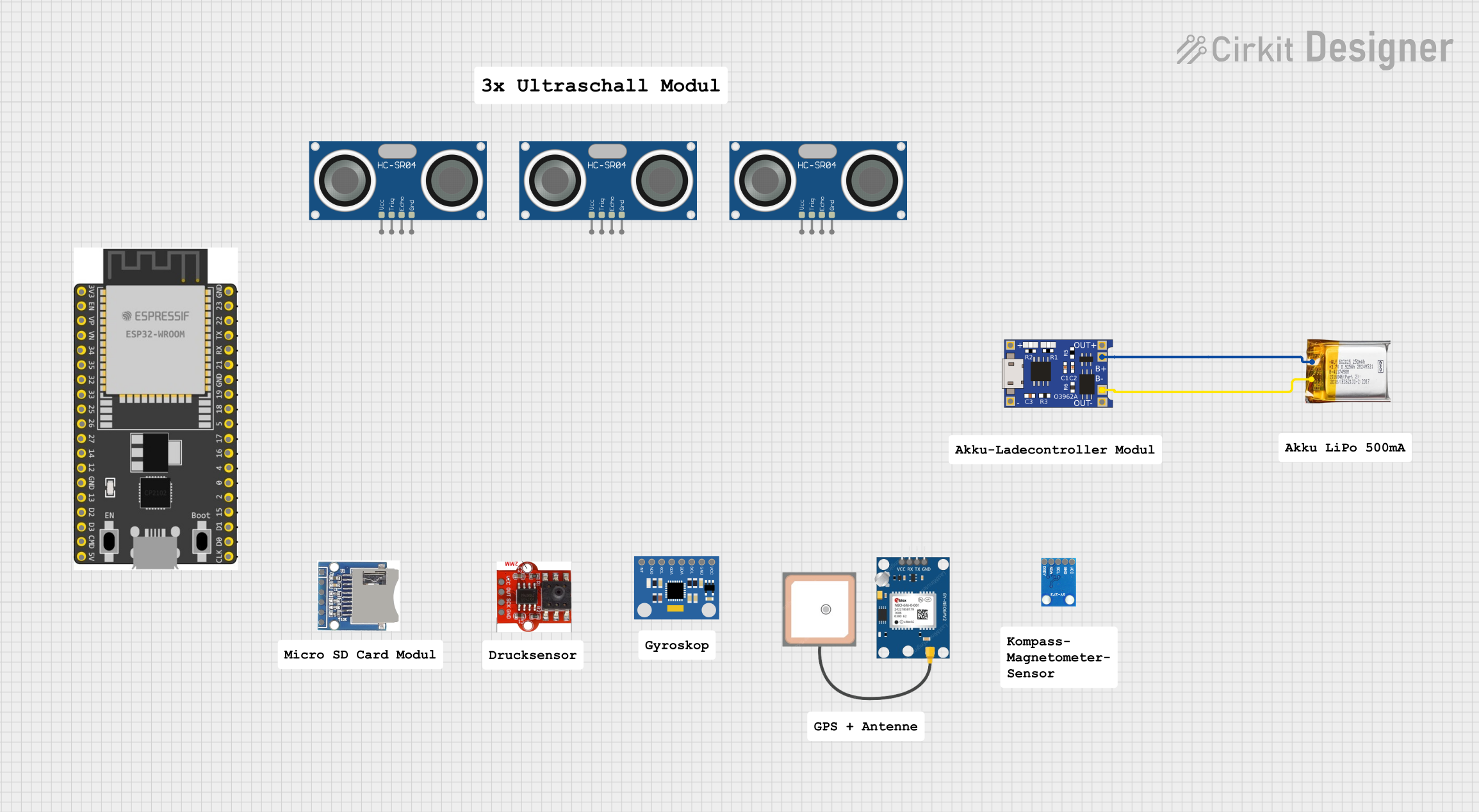
 Open Project in Cirkit Designer
Open Project in Cirkit Designer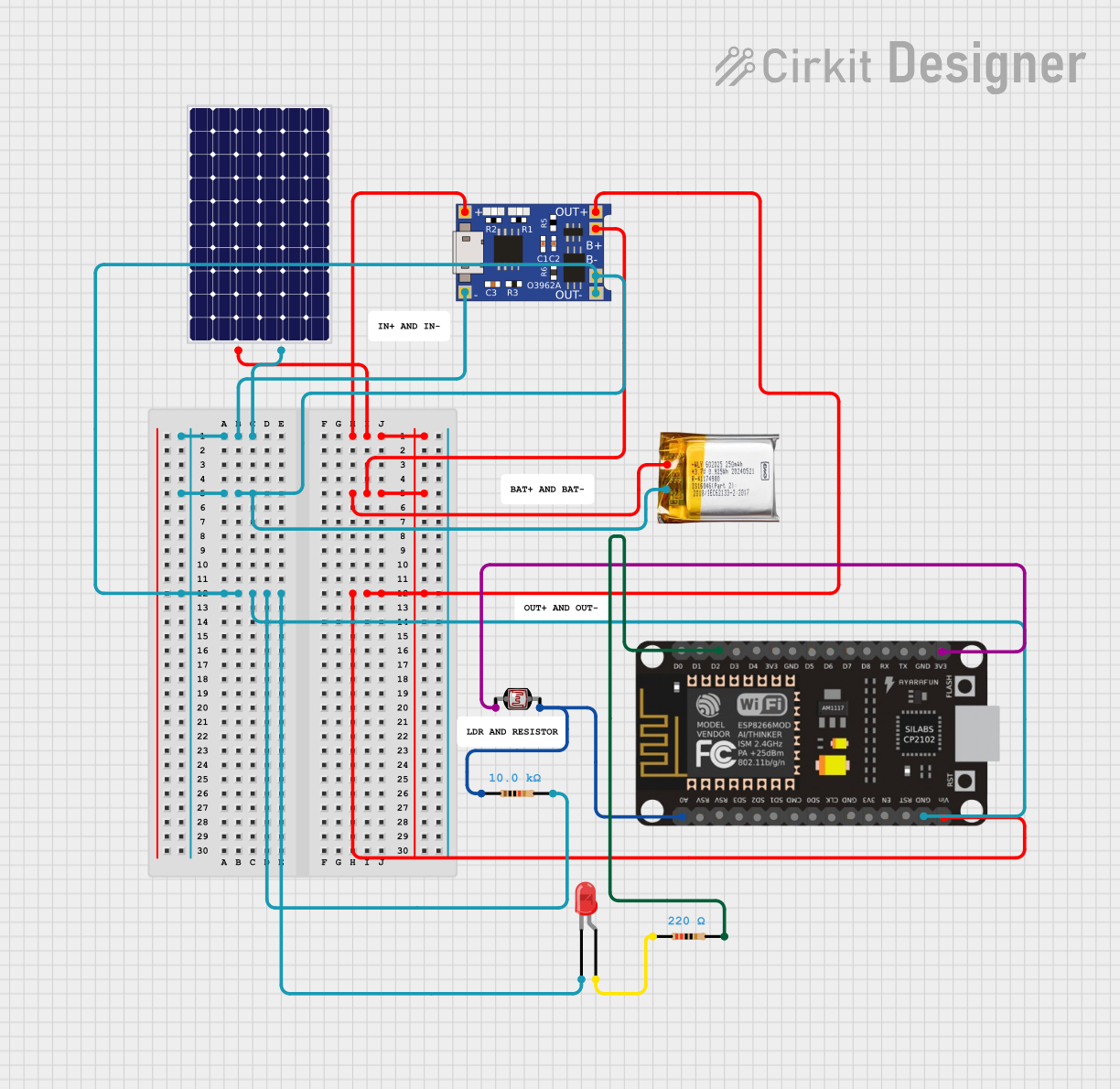
 Open Project in Cirkit Designer
Open Project in Cirkit DesignerExplore Projects Built with 3.7v LiPo

 Open Project in Cirkit Designer
Open Project in Cirkit Designer
 Open Project in Cirkit Designer
Open Project in Cirkit Designer
 Open Project in Cirkit Designer
Open Project in Cirkit Designer
 Open Project in Cirkit Designer
Open Project in Cirkit DesignerCommon Applications and Use Cases
- Mobile and wearable devices
- Remote-controlled toys and drones
- DIY electronics projects
- Portable medical devices
- Backup power supplies
Technical Specifications
Key Technical Details
- Nominal Voltage: 3.7V
- Charge Voltage: Typically 4.2V
- Discharge Cut-off Voltage: Approximately 3.0V
- Energy Density: Varies by model and manufacturer
- Charge/Discharge Cycles: Typically 300-500 cycles before capacity drops to 80%
- Operating Temperature: Varies by model, commonly 0°C to 45°C (charging), -20°C to 60°C (discharging)
Pin Configuration and Descriptions
| Pin Number | Description | Notes |
|---|---|---|
| 1 | Positive (+) Terminal | Connect to the positive input of the charging circuit or load |
| 2 | Negative (-) Terminal | Connect to the negative input of the charging circuit or load |
Usage Instructions
How to Use the Component in a Circuit
Charging the Battery:
- Use a dedicated LiPo battery charger or charging circuit.
- Ensure the charger is set to the correct voltage (4.2V for a full charge).
- Monitor the charging process to prevent overcharging.
Discharging the Battery:
- Do not exceed the battery's maximum discharge rate.
- Avoid discharging the battery below its cut-off voltage (3.0V) to prevent damage.
Storage:
- Store the battery at approximately 3.7V to 3.8V for long-term storage.
- Keep the battery in a cool and dry place.
Important Considerations and Best Practices
- Always use a protection circuit to prevent overcharging, over-discharging, and short circuits.
- Avoid physical damage to the battery, as punctures or bends can lead to dangerous situations, including fire.
- Do not expose the battery to high temperatures or direct sunlight.
- Dispose of the battery according to local regulations, as LiPo batteries are considered hazardous waste.
Troubleshooting and FAQs
Common Issues Users Might Face
- Battery not charging: Check the charger and connections. Ensure the battery is not below its safe voltage.
- Reduced battery life: This may indicate the battery has reached the end of its useful life or has been stored improperly.
- Swelling or puffing: Stop using the battery immediately. This is a sign of internal damage or failure.
Solutions and Tips for Troubleshooting
- If the battery won't charge, verify the charger's output voltage and the battery's voltage. Replace the battery if it's below 3.0V.
- For reduced battery life, consider replacing the battery if it no longer holds a charge as expected.
- If the battery is swollen, properly dispose of it at a battery recycling facility.
FAQs
Q: Can I charge a LiPo battery with a regular lithium-ion charger? A: It's not recommended. LiPo batteries require specific charging algorithms. Always use a charger designed for LiPo batteries.
Q: How do I know when my LiPo battery is fully charged? A: A fully charged LiPo battery will reach a voltage of 4.2V. Most dedicated chargers will indicate when the battery is fully charged.
Q: What should I do if my LiPo battery gets wet? A: Immediately disconnect the battery, allow it to dry completely, and inspect for damage before using it again. If in doubt, replace the battery.
Q: Is it safe to leave my LiPo battery charging overnight? A: It is not recommended to leave LiPo batteries charging unattended, especially overnight, due to the risk of overcharging and potential fire hazard.
Example Code for Arduino UNO
The following example demonstrates how to read the voltage of a 3.7V LiPo battery using an Arduino UNO. This setup requires a voltage divider circuit to step down the voltage to a safe level for the Arduino's analog input.
const int batteryPin = A0; // Battery connected to analog pin A0 through a voltage divider
void setup() {
Serial.begin(9600);
}
void loop() {
int sensorValue = analogRead(batteryPin); // Read the analog value (0 to 1023)
float batteryVoltage = sensorValue * (4.2 / 1023.0) * 2; // Convert to battery voltage
Serial.print("Battery Voltage: ");
Serial.println(batteryVoltage);
delay(1000); // Wait for 1 second before the next reading
}
Note: The voltage divider should be designed to halve the battery voltage, as the maximum voltage the Arduino analog pin can safely read is 5V. The example assumes a 2:1 ratio, which is suitable for a fully charged LiPo battery at 4.2V. Adjust the divider ratio as needed for your specific setup.